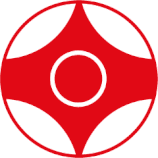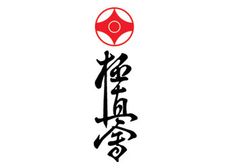Kyokushin Karate (Briefly)
Kyokushin Karate is a traditional Japanese Martial Art, or Budo Karate.
It was created in the early 1960’s by the founder Sosai Masutatsu (Mas) Oyama after his 30 year in depth study of various Martial Arts e.g. Chinese & Korean Kempo, Shotokan Karate, Judo, Goju Ryu Karate, Western Boxing etc.
The International Headquarters (So Honbu) was opened in June 1964 at Ikebukuro in Tokyo, Japan and the name Kyokushin, meaning “Ultimate Truth”, was officially adopted. Prior to this it was simply known as Oyama Karate.
In the Martial Arts circles, Kyokushin Karate is often referred to as “The Strongest Karate”. It is renowned for its rigorous training and conditioning, realistic body contact in sparring, the use of tameshiwari (breaking test) technique, heavy reliance on circular motion and disciplined, strictly traditional mannerisms.
All the above, and in particular the use of circular movement in the execution of techniques, makes Kyokushin Karate rather unique compared to other Karate styles, which mainly rely on simple linear movement and non contact training.
In summary, Kyokushin Karate can be described as being elegant and serene in its movements; refined and stable in its form; classical in its methods, beliefs and protocols, yet very relevant in the 21st century as an excellent method of training mind, body and spirit and a very effective means of self defence.
Logos, Symbols and Meanings
The Kanku
The symbol of Kyokushin Karate is the Kanku. It is derived from the Kanku Kata, sky gazing form. In this Kata the hands are raised to scan the sky and the symbol is formed. (see picture on the right)
The points of the Kanku represent the fingers and imply the ultimates or peaks, the thick sections represent the wrists and imply power. The centre represents infinity, implying depth. The whole Kanku is based and enclosed by a circle, representing continuity and circular action.
Kyokushin Karate begins and ends with points and circles in which lies the strength and the life of the system.
The Kyokushin-Kai Kanji (Calligraphy)
The characters for Kyokushin-Kai, found on the dogi (training uniform) of members worldwide. These characters were originally painted by Haramotoki Sensei, calligraphy master and friend of Sosai Mas Oyama.
The Meaning
Kyoku = Ultimate or Extreme
Shin = Truth or Reality
Kai = Society, Join, Associate
Therefore KYOKUSHINKAI means Society seeking or searching for the the Ultimate Truth
Kyokushin Spirit
“The heart of our karate is real fighting.
There can be no proof without real fighting.
Without proof there is no trust.
Without trust there is no respect.
This is a definition in the world of Martial Arts.”
Kyokushin Philosophy
Keep your head low (modesty),
eyes high (ambition),
mouth shut (serenity);
base yourself on filial piety and benefit others.
Dojo Kun (Dojo Oath)
Eleven Mottoes of Mas Oyama
We will train our hearts and bodies
for a firm unshaking spirit.
We will pursue the true meaning of the Martial Way,
So that in time, our senses may be alert.
With true vigor,
we will seek to cultivate a spirit of self denial.
We will observe the rules of courtesy,
respect our superiors,
and refrain from violence.
We will follow our religious principles,
and never foget the true virtue of humility.
We will look upwards to wisdom and strength,
not seeking other desires.
All our lives,
through the discipline of karate,
we will seek to fulfill the true meaning of the kyokushin way.
The Martial Way begins and ends with courtesy.
Therefore, be properly and genuinely courteous at all times.
Following the Martial Way is like scaling a cliff – continue upwards without rest.
It demands absolute and unfaltering devotion to the task at hand.
Strive to seize the initiative in all things, all the time guarding against actions
stemming from selfish animosity or thoughtlessness.
Even for the Martial Artist, the place of money cannot be ignored.
Yet one should be careful never to become attached to it.
The Martial Way is centered in posture.
Strive to maintain correct posture at all times.
The Martial Way begins with one thousand days
and is mastered after ten thousand days of training.
In the Martial Arts, introspection begets wisdom.
Always see contemplation on your action as an opportunity to improve.
The nature and purpose of the Martial Way is universal.
All selfish desires should be roasted in the tempering fires of hard training.
The Martial Arts begins with a point and end in a circle.
Straight lines stem from this principle.
The true essence of the Martial Way can only be realized through experience.
Knowing this, learn never to fear its demands.
Always remember: In the Martial Arts the rewards of a confident and
Grateful heart are truly abundant.


